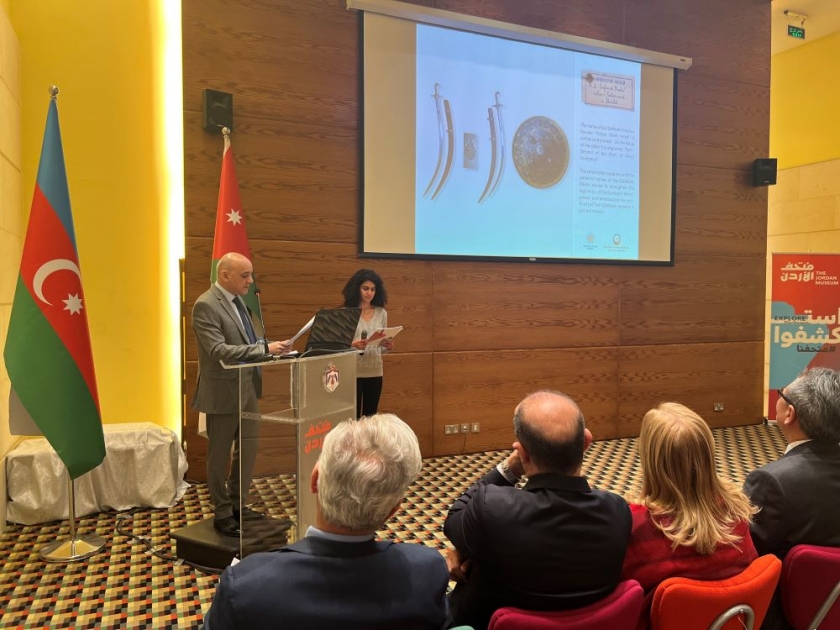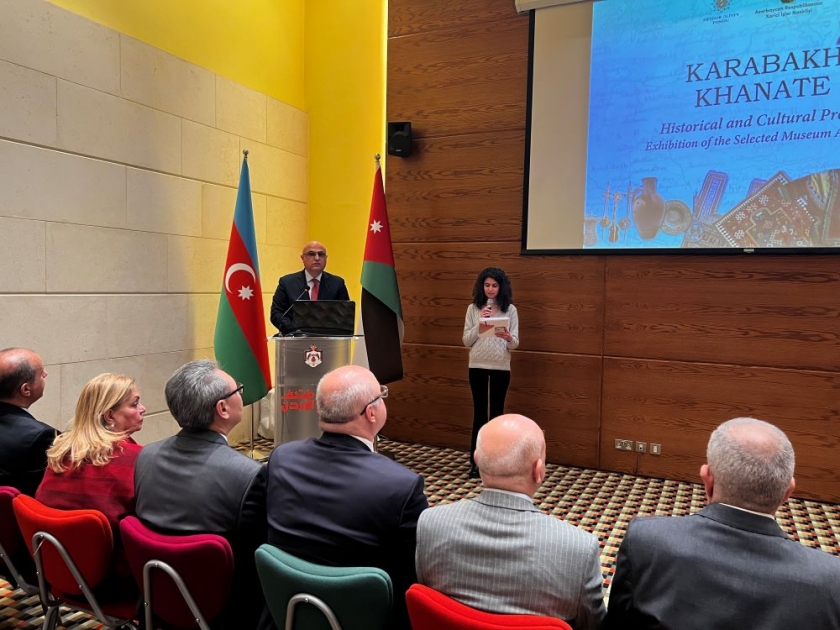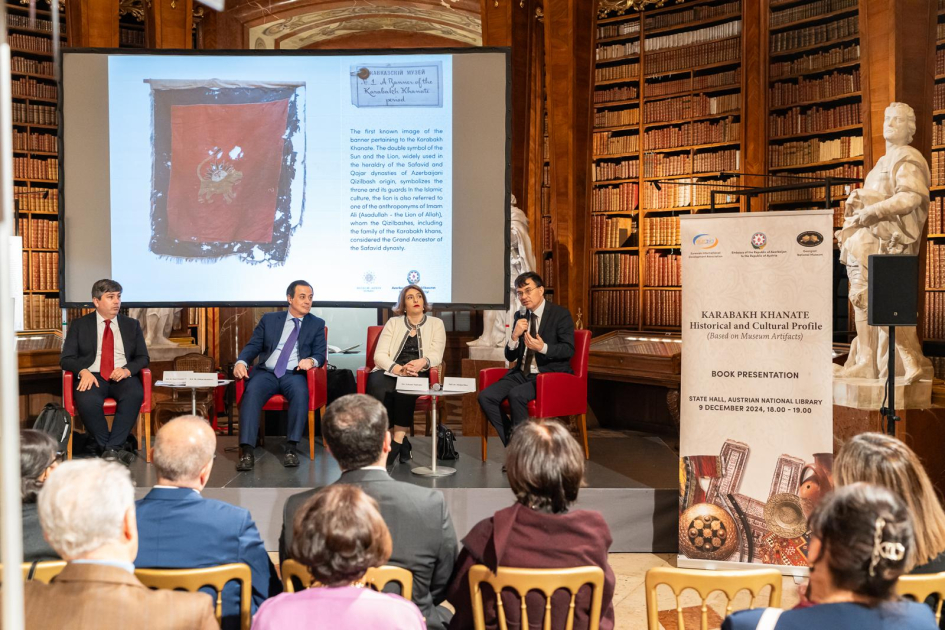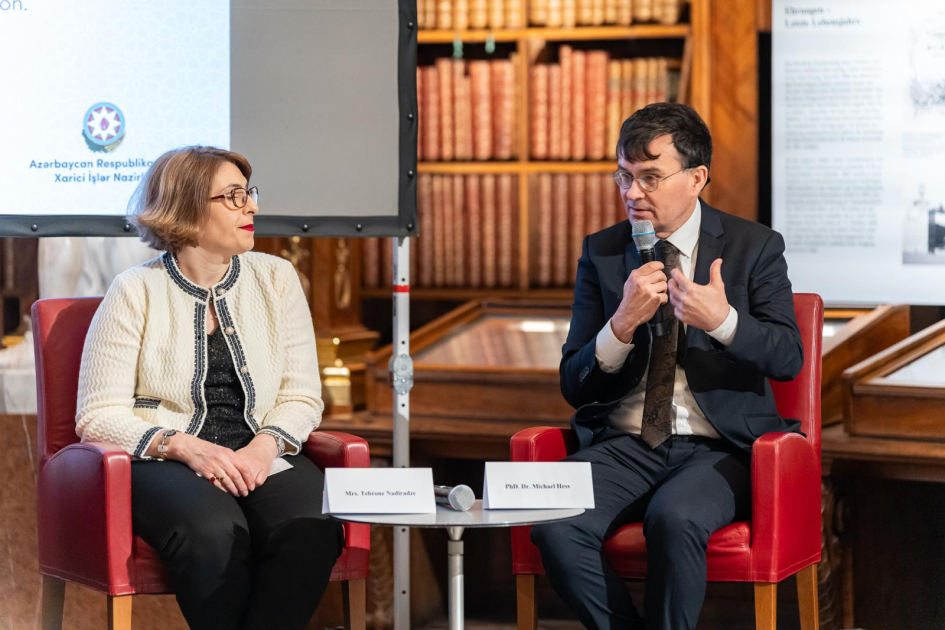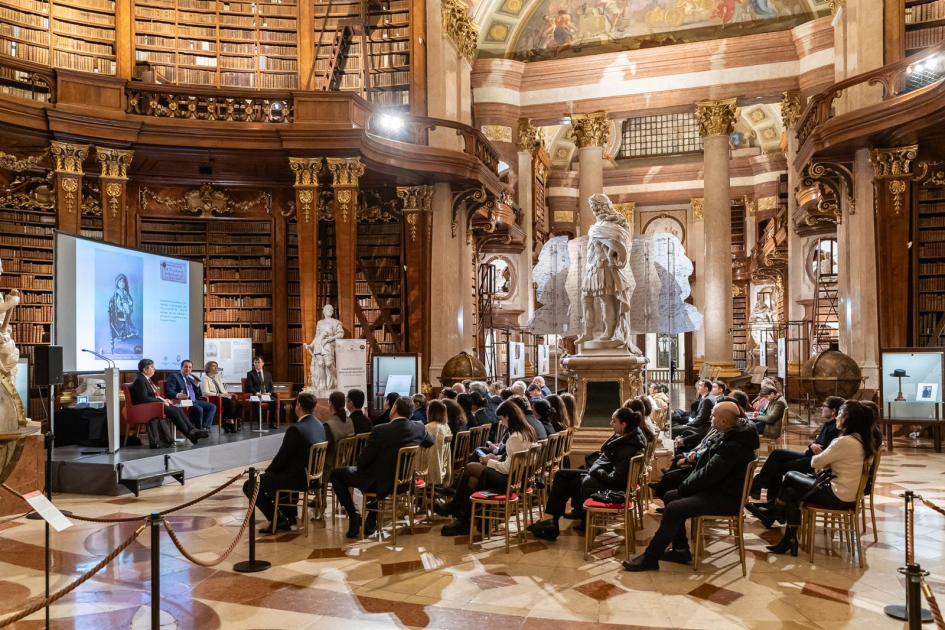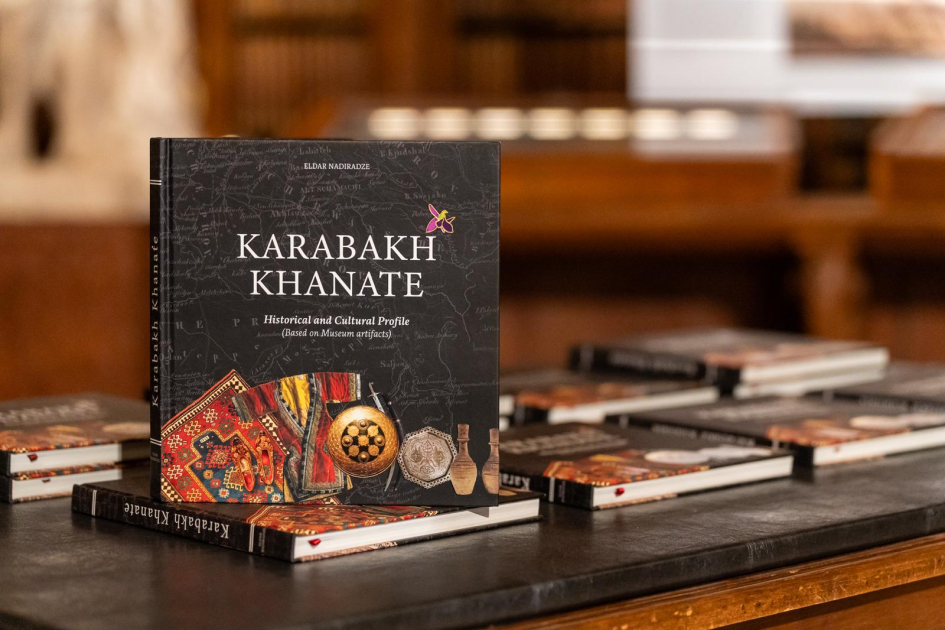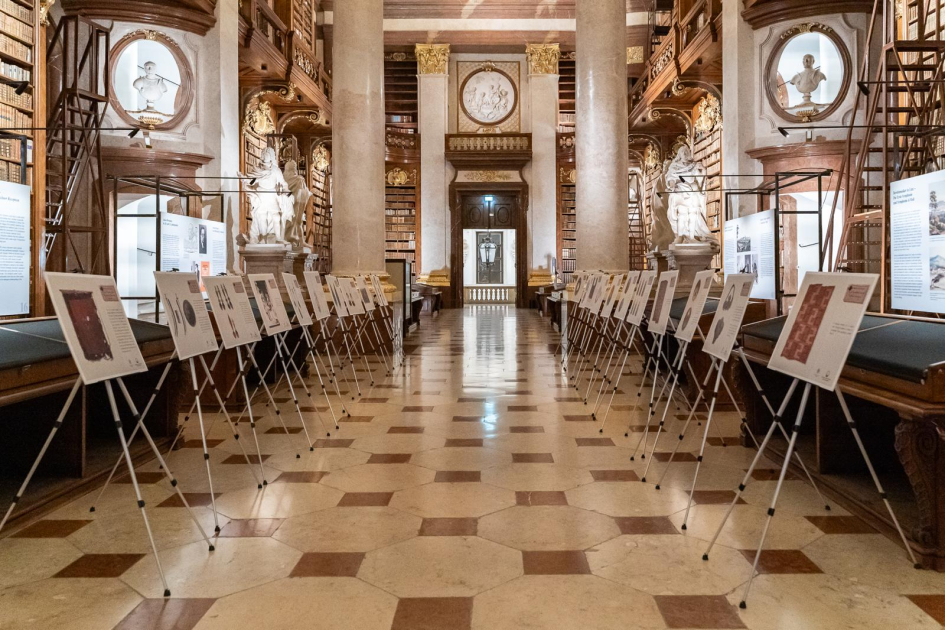- December 10, 2024
- Posted by: admin_eida
- Category: News, Uncategorized

The Jordan Museum in Amman has hosted the book presentation “Garabagh Khanate: Historical and Cultural Identity” in Arabic, published on the initiative of the Heydar Aliyev Foundation with the support of the Azerbaijan Ministry of Foreign Affairs.
At the Azerbaijani Embassy in Jordan, the opening ceremony was addressed by the General Director of the Jordan Museum, Ihab Amarin, and the Azerbaijani Ambassador to the Hashemite Kingdom of Jordan, Eldar Salimov, Azernews reports.
In their remarks, they emphasised that the album-book, previously published in English, French, and Spanish, played an important role in conveying detailed information about Shusha, one of the cultural centres of the Caucasus and the cultural heritage of ancient Azerbaijan, to the public in different countries.
The Ambassador, Eldar Salimov, noted that the materials included in the publication, which were stored in the archives of the National Museum of Georgia for over 100 years and were discovered only a few years ago thanks to the initiative of the Heydar Aliyev Foundation, indicate that Garabagh belongs to the cultural identity of Azerbaijan.
The discussions were attended by the Chairman of the Board of the Eurasian International Development Association (EMAD), Elchin Asgarov, Professor Mohammed Wahib of the University of Jordan, and Jordanian writer and historian Mohamed Al Udwan.
Speaking about the policy of artificial Armenianization of artefacts of Albanian culture, they emphasised that ethnographic materials collected during the period of the Russian Empire and now stored in Georgia indicate that Garabagh, as an important centre, belongs to the national culture of Azerbaijan.
EMAD Chairman Elchin Asgarov also spoke about the mass resettlement of Armenians after the division of Azerbaijan between Russia and Iran in 1828.
“The book includes thousands of new materials found in archives, which not only reflect the ancient history of Azerbaijan’s statehood in Garabagh, but also information about the peaceful coexistence of various madhhabs of Islam and representatives of other religions. These materials demonstrate that interreligious and intercultural tolerance and mutual respect are values that have long been inherent in the Azerbaijani people. Ultimately, they created a unique model that is applauded in today’s world,” said Elchin Asgarov.
Elchin Asgarov briefed the attendees about the destruction of Azerbaijan’s cultural and religious heritage in Garabagh during the 30-year Armenian occupation and stressed the particular importance of studying the heritage of the Garabagh Khanate by Georgian scientists in terms of identifying the historical truth about the role of this region in the formation of the national identity of Azerbaijan.
In conclusion, the event participants were presented with copies of the book “Garabagh Khanate: Historical and Cultural Identity” and viewed a photo exhibition organised in the museum’s foyer.
The photo exhibition showcased artefacts from the Garabagh Khanate, which are currently kept in the collections of the Georgian National Museum.
On December 10, 2024, a conference dedicated to the presentation of the same book took place at the Austrian National Library, located within the Hofburg Palace complex in Vienna.
According to AZERTAC, the collective work, published in five languages by the initiative of the Heydar Aliyev Foundation and with the support of the Azerbaijani Foreign Ministry, was authored by leading staff members of the Georgian National Museum (GNM).
Opening speeches were delivered by Rovshan Sadigbeyli, Ambassador of Azerbaijan to Austria, and Irmgard Harrer, curator of the Austrian National Library, one of Europe’s cultural-historical centers. They noted that hosting the presentation in the library’s State Hall would positively impact the European academic community and help form a fuller understanding of the cultural heritage and deep historical roots of Azerbaijan in Karabakh.
Elshad Iskandarov, Ambassador-at-Large of the MFA, addressed the preservation of the Karabakh Khanate’s heritage within the GNM, in contrast to Armenia’s total destruction of Azerbaijan’s heritage during the occupation. He stressed the importance of Georgian researchers’ in-depth studies in revealing the historical truth about Karabakh’s role in Azerbaijan’s national identity. Iskandarov emphasized that the liberation of Karabakh and its ongoing revival are vital elements of the Azerbaijani national idea.
Conference presentations were delivered by Tebrone Nadiradze, Deputy Chief Curator of the GNM; Daniele Pompei Vincelli, a researcher at Sapienza University of Rome; and Michael Reinhard Hess, a Turkologist and Associate Professor at the University of Giessen in Germany. They discussed various aspects of the Karabakh Khanate.
Foreign researchers emphasized that objective ethnographic materials gathered during the Russian Empire era and preserved in Georgia confirm that the Karabakh region is one of the key centers of Azerbaijani national culture. They stated that Karabakh’s heritage reflects the legacy of the centuries-old Azerbaijani statehood—particularly the Qizilbash state that ruled a vast geographical area—and showcases cultural contributions and traditions of respect for different nationalities and religions.
Concluding the discussions, German Turkologist Michael Hess highlighted that anyone familiar with the book can clearly understand the role of Shusha—Karabakh’s cultural gem and a treasure of the Caucasus—in forming and preserving Azerbaijan’s unique national identity.
At the end of the event, copies of “Karabakh Khanate: Historical and Cultural Identity” were presented to the Austrian National Library and conference participants.
It is noteworthy that the publication, prepared with support from the Azerbaijani MFA and the Eurasian International Development Association, has already been presented to the public at major museum and library centers in Madrid, Warsaw, Rome, Amman, and at UNESCO headquarters.
